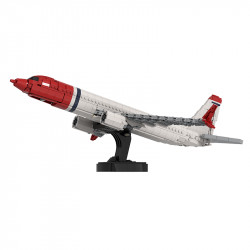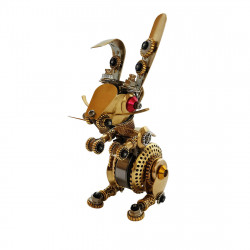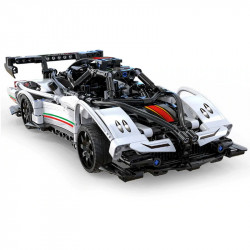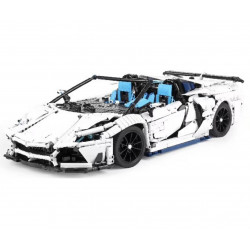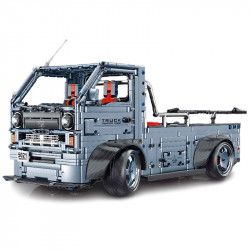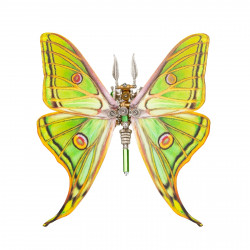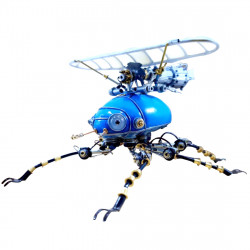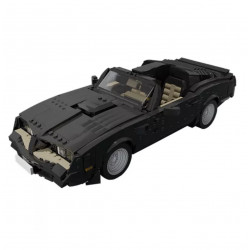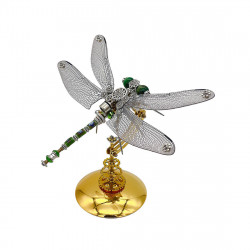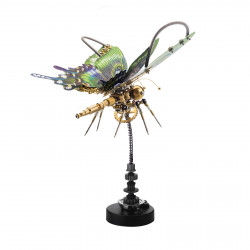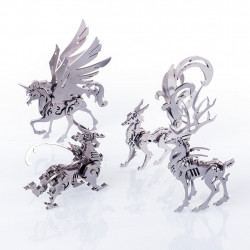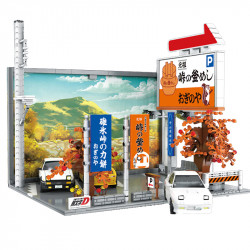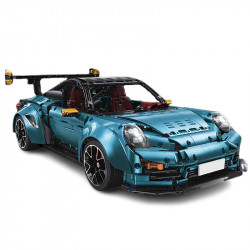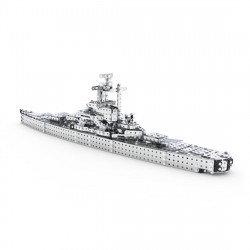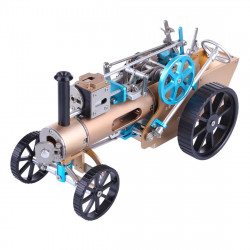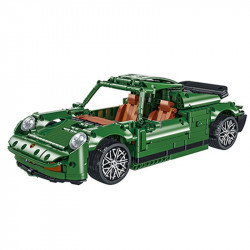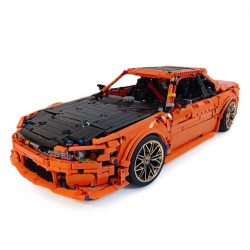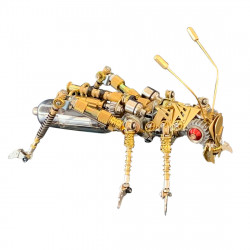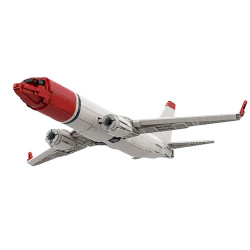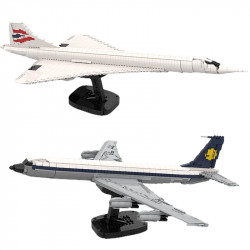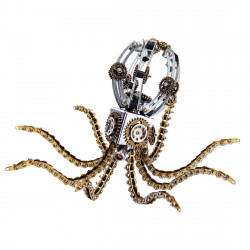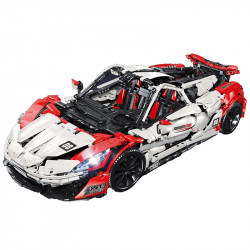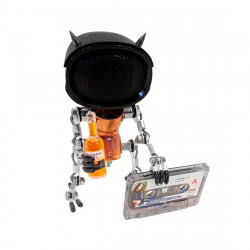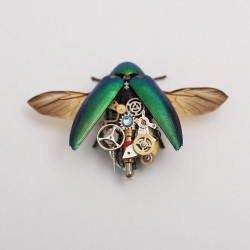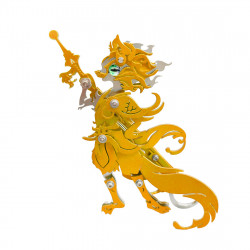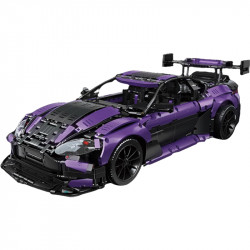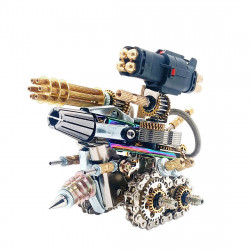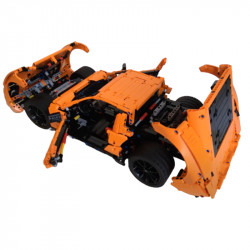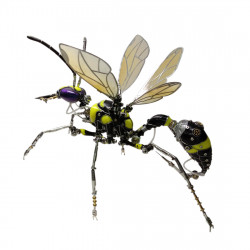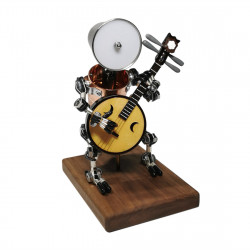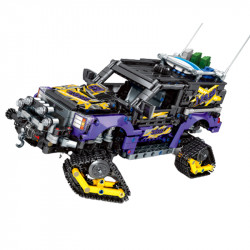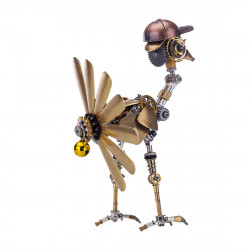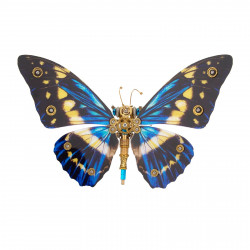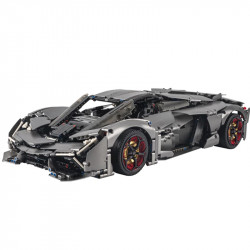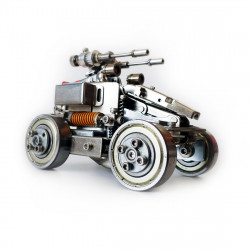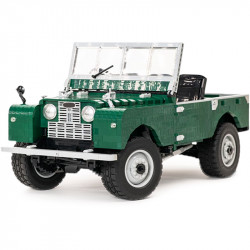4 Creative Ideas Metal Sculptors Can Bring to Life with Manta-Ray Model

4 Creative Ideas Metal Sculptors Can Bring to Life with Manta-Ray Model
In the modern world, when environmental concerns, technology advancements, and artistic narratives are more intertwined than ever, sculptors and metal artists always look for fresh approaches to producing visually striking and powerful pieces. The Metal3dpuzzles Manta Ray model might be a significant source of inspiration for your upcoming project if you're a metal sculptor enthusiastic about pushing boundaries.
Besides being exquisitely constructed, this model represents the ocean's elegance, tenacity, and mystique and provides countless opportunities for imaginative scene-building. We explore four distinct, sculptor-friendly scene concepts below that demonstrate how to incorporate the manta ray into creative installations, fusing metal, narrative, and creativity in exciting ways.
1. Scene: "Metallic Ocean Rebirth" – A Post-Apocalyptic Underwater World
Inspiration:
Numerous artists have been influenced by environmental harm and ocean pollution worldwide to produce provocative works utilizing repurposed and recycled materials. This scene, which shows a futuristic, metallic underwater environment where marine life flourishes amid ruins of past disasters, allows you to investigate themes of ecological rebirth.
How to Build It:
- Base Idea: Make a "mechanical ocean floor" out of rusty chains, bolts, scrap metal, and ancient gears. This foundation can resemble seabeds composed of metal debris and coral reefs.
- Positioning the Manta Ray: Put the Manta Ray in a dynamic "gliding" pose so that it appears to be swimming gracefully through this metallic environment. Its fins can be subtly welded to the nearby metal corals to blend in with the surroundings while maintaining a flowing, organic appearance.
- Details to Add: Create a ring of "metal sea plants" by simulating seaweed with wires, nuts, and oxidized copper. To improve the underwater atmosphere, consider including metal sea critters like fish, sea snails, or mechanical crabs.
- Finishing Touches: To give your exhibit a genuine, deep-sea vibe, apply rust or patina effects to some sculpture components to simulate underwater ageing.
Why It Works:
This scenario highlights the beauty of marine life in a post-industrial future while allowing you to comment on how humans affect the ocean. It's ideal for public sculptures that promote ocean conservation, gallery installations, and environmental art displays.
2. Scene: "Future Evolution" – A Sci-Fi Mechanical Manta-Ray Lab
Inspiration:
Imagine a future in which sophisticated genetic engineering transforms marine life into biomechanical hybrids. The Manta Ray represents advanced development in this futuristic picture that examines the boundary between biology and technology.
How to Build It:
- Base Idea: Create a scene in a "sci-fi lab" where the Manta Ray is the main character and appears to be being upgraded or recharged in a futuristic tank.
- Positioning the Manta Ray: Place the model on an elevated platform or energy base encircled by metallic arms that seem "working" on the creature, glowing cables, and tiny LED lights. To give the Manta Ray's fins a more "mechanical" appearance, you can add miniature gear plates or rivets, among other metal accents.
- Details to Add: To add to the high-tech ambience, use metal tubing, futuristic control panels, and engravings on the base that resemble circuits. To simulate energy fields or plasma tubes, use transparent or reflecting materials.
- Finishing Touches: To give the Manta Ray a slick, high-tech look without sacrificing its graceful design, imagine painting some pieces in metallic colours (such as deep blue, silver, or chrome).
Why It Works:
Modern themes of bioengineering, artificial intelligence, and the fusion of mechanical and organic life are all explored in this scene. It's perfect for futuristic sculpture collections, movie settings, and art displays with a sci-fi theme.
3. Scene: "Ancient Underwater Temple" – The Manta Ray as a Deep-Sea Guardian
Inspiration:
Mythological stories and ancient civilizations serve as sources of inspiration for many artists. The Manta Ray is shown in this picture as a deep-sea guardian or deity perched atop a long-lost temple.
How to Build It:
- Base Idea: Using carved metal pieces that mimic old stone, complete with weathering, fissures, and the effects of underwater erosion, create a "sunken temple" base.
- Positioning the Manta Ray: Position the figure, slightly slanted as though it were surveying its historic dominion, on top of a central altar or plinth.
- Details to Add: Weld elaborate metal patterns, like deep-sea animals, marine runes, or ancient symbols, onto the temple walls. To intensify the underwater appearance, surround the image with sculpted "barnacles" or metal "sea vines."
- Finishing Touches: The image can appear as a long-lost undersea relic by applying oxidation, patina, or greenish-blue ageing effects.
Why It Works:
This setting is a powerful addition to any art exhibit or sculpture garden since it draws on the charm of old mysteries and maritime mythology. It also asks viewers to consider the buried history and undiscovered wonders beneath the ocean.
4. Scene: "Skybound Marine" – A Floating Island with a Manta Ray Companion
Inspiration:
Who says that manta rays are only appropriate for the ocean? In this fanciful landscape, the sea and sky are combined to create a strange, dreamlike ecology where marine life lives on floating islands.
How to Build It:
- Base Idea: Use layers of metal plates, gears, and rods to create a "floating island" with a steam-powered, mechanical appearance. To give the impression that the island is floating, suspend it from concealed cables or supports.
- Positioning the Manta Ray: Imagine the Manta Ray flying close to the island's edge, seemingly soaring through the sky alongside the floating scenery.
- Details to Add: Create small metal "mechanical birds" or "floating jellyfish" sculptures to add to the surreal, airborne atmosphere. For contrast, add tiny metallic grasses, flowers, or trees to the island's surface.
- Finishing Touches: Give the island an aged, steampunk look with touches of brass, copper, and rust by using metallic paint and texturing techniques.
Why It Works:
Fans of fantasy, steampunk, and surreal art may like this scene's whimsical, inventive depiction of sea life. It's ideal for shows with a fantastical theme, outdoor art installations, or individual sculptural projects that push the envelope.
Final Thoughts:
The Metal3dpuzzles Manta Ray model is a multipurpose, inspirational component that can be the focal point of various artistic settings, making it more than just a decorative item. This model provides countless opportunities for imaginative inquiry, regardless of your preference for ecological themes, futuristic ideas, ancient mythology, or whimsical fantasy.
Using it in your upcoming project, you can produce striking, provocative pieces that enthral audiences while conveying important messages about the ocean, evolution, and the interdependence of all species. So why not explore the depths of your mind and see where the Manta Ray can lead you?
Ready to bring your vision to life? Your next masterpiece is just waiting to be inspired by the Metal3dpuzzles Manta Ray model!
